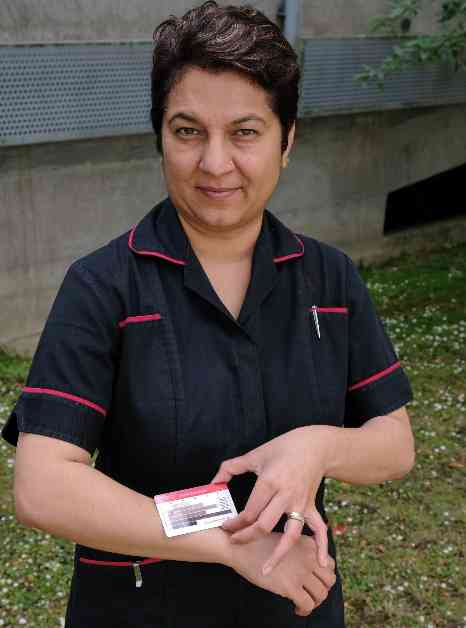A nurse in London, Luxmi Dhoonmoon, has brought attention to the importance of using skin-tone cards to detect early signs of pressure ulcers in black and Asian patients. She noticed that many patients from ethnic minorities were showing up with late-stage ulcers that had not been previously identified. This can lead to severe damage, even affecting the muscle and bone in extreme cases.
To address this issue, every healthcare assistant and nurse at Ealing Hospital has been provided with a skin-tone card displaying a range of skin colors from light to dark. This visual tool aims to help medical staff spot potential problems early on, especially when the signs might be less visible on darker skin tones.
While dermatologists have used skin-tone gradients to detect cancer, the idea of utilizing them for identifying pressure ulcers is relatively new. Luxmi believes that a lack of awareness and potential discomfort around discussing skin-tone differences has contributed to the oversight of these issues.
Ealing, being a diverse community, could greatly benefit from the widespread use of skin-tone cards in healthcare settings. Luxmi emphasizes that this approach is not meant to criticize anyone but to offer a simple yet effective method for improving patient care.
The success of the skin-tone card in detecting pressure ulcers has garnered international attention, with a doctor from Australia reaching out to Luxmi about its potential benefits for treating aboriginal patients. Luxmi also sees the possibility of adapting the card to identify early-stage cellulitis, a bacterial skin infection that causes pain and swelling.
By raising awareness about the importance of considering skin tone in healthcare practices, Luxmi Dhoonmoon has sparked a valuable conversation about inclusivity and effective patient care. Her innovative approach highlights the need for healthcare professionals to be attentive to the diverse needs of their patients, ensuring that no one is overlooked or underserved due to their skin color.












